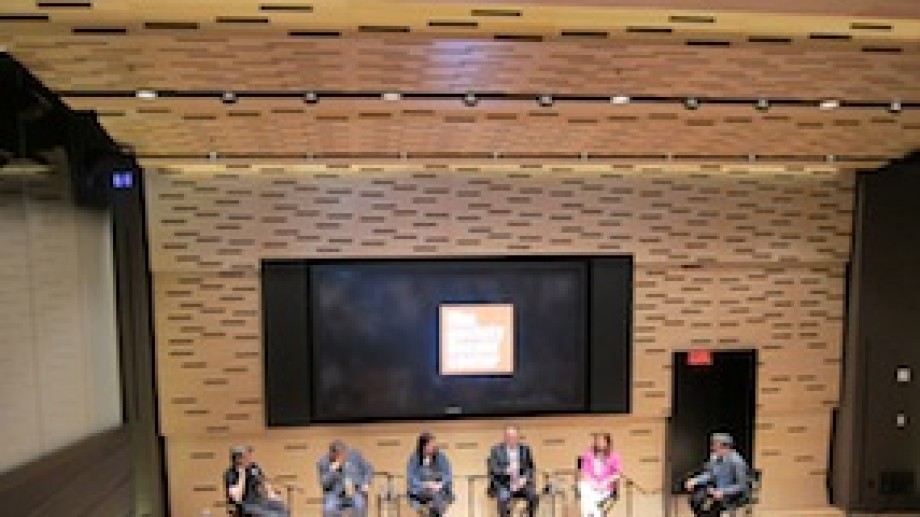“In terms of the arts, Uptown has suffered a little bit,” explained Ann Tenenbaum, Film Society Board Chairman, talking to members of the press inside the amphitheater at the new Elinor Bunin Munroe Film Center (the complete press conference is available below via YouTube). “This building and the visibility that the Film Society now has on the Lincoln Center campus changes the conversation about film at Lincoln Center as well as Uptown.” The Film Society is moving front and center at the Lincoln Center campus with the new multi-screen space, slated to open officially on June 17 with a screening of Andrew Rossi's Page One: Inside New York Times. “It raises the bar on the discussion about the art of film,” explained Tenenbaum, “We did amazing things but we were tucked away at Lincoln Center and we were easy to ignore. We're very visible now and we're not easy to ignore.”
Program Director Richard Peña emphasized another important aspect that the film center brings, “The key word is 'Flexibility.'” The new film center adds depth to the diversity of programs the Film Society offers, allowing an increased number of specialty screenings, workshops, seminars and ambient video works. “With each new addition it just expands what we can do,” Peña said. “Things we have already been doing, to a certain extent, but now we can do them more frequently and hopefully even better.”
David Rockwell, the man behind the film center's design, highlighted the complex's potential for accessibility. “So many people thought of the Film Society as the Film Festival,” explained the architect. “We realized the space needed that kind of fluency and spontaneity.” Sitting inside what he calls, “the living room of the complex,” it is easy to see that informal, welcoming feel that he was referring to, resulting in a space that can adapt to the programs it hosts. Peña sees it as an opportunity for the Film Society to “present as wide a panorama of what we do and are known for.” That means a liberty to program events that are better suited for smaller venues, free of the financial constraints of larger sites.
Essentially, as Rockwell explained, the Elinor Bunin Munroe Film Center is designed to be “a seminal reinvention of one of New York's great landmarks.”
“We spend so much time in our lives looking at small screens and content at home — you can see movies anywhere,” elaborated Rockwell, “Part of the goal here was to create a place that was about the community of film. Not just about seeing the film but having a conversation, so this is very much based on the notion of having a one on one experience with a screen but participating in a kind of community.”



